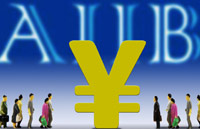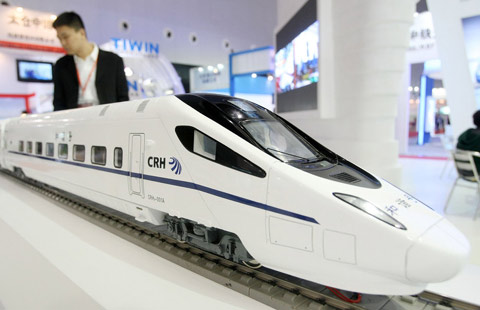Challenges ahead for rest of the year
Updated: 2015-07-21 11:01
(CHINA DAILY)
|
|||||||||||
As indicators reveal signs that the country's economy is starting to pick up, China Daily asks five leading economists for their long-term views, including what they see as the risks along the way
Zhu Haibin
Zhu Haibin, chief economist in China, JPMorgan Chase & Co
Last week's GDP data highlighted growing economic activity. Domestic demand and retail sales have all held up, which was a positive sign. But one surprise has been the increased growth in fixed-assets investments.
This suggested an upturn in infrastructure investment in particular, probably due to government measures to address short-term fiscal constraints. Looking ahead, Beijing will probably continue to support infrastructure investment in the coming months as a way of dealing with that problem.
Other areas of the economy still need to be addressed. Development in the real estate market remains critical, and should be watched closely. In addition, stock market turmoil could affect the financial sector's contribution to GDP growth in the short term.
It could also have an effect on Internet-related sectors and e-commerce, which have attracted substantial investment. That might ease as a result of the fallout from the markets.
WangTao
Wang Tao, chief economist in China, UBS AG
Economic improvement is expected to continue in the third quarter, boosted by stronger infrastructure support and a modest export recovery. But the impact of government policy support will start to fade in the fourth quarter, while concerns about the property sector will also persist.
The recent recovery in the housing market has had a positive effect, and this will help ease concerns about a downward trend in growth or even a "hard landing" for the sector. Lower borrowing costs, after the People's Bank of China, the central bank, cut interest rates, have helped fuel demand.
But downside risks remain. Weaker construction activity will have a bigger impact on the economy, while the aftershocks from the stock market turmoil on financial services will be another area of concern.
A stronger currency has also made Chinese exports more expensive, while demand for goods outside the United States looks fragile. These are additional downside risks that the economy faces in the months ahead.
Song Yu
Song Yu, chief economist in China, Goldman Sachs
We have argued since the first quarter that three key factors could help spark a meaningful recovery. It was imperative to loosen monetary, fiscal and administrative policies, as well as stimulate spending that had been hit by the anti-corruption campaign. Strong export growth was also vial.
Last week's data confirmed that this has happened and that overall growth has been reasonably firm, despite the market turmoil, which resulted in a sharp sell-off of A shares. GDP growth was 7 percent in the second quarter, which was good news.
Looking ahead to the second half of the year, we expect the government to continue its policy to stimulate the economy because of the correction in equity markets. As a result, economic activity should accelerate in the third quarter, maintaining the 7 percent GDP growth target. Naturally, there will be risks ahead.
Jeremy Stevens
Jeremy Stevens, economist, Standard Bank
Official data released last week confirmed that GDP was 7 percent in the second quarter, which beat expectations. On the plus side, growth has stabilized during the past two months after the central government rolled out measures to stimulate the economy.
Maintaining the momentum will be challenging in the second half of the year, which could result in annual growth sliding further to 6.8 percent from 7.4 percent in 2014.
In the third quarter, it is possible the economy could start to run out of steam. Obviously, this will hit the GDP figure. By the fourth quarter, growth could decelerate again. These are the challenges facing China's economy, despite last week's unexpected boost in growth.
Jacqueline Rong
Jacqueline Rong, economist, BNP Paribas China
The second-quarter GDP figure of 7 percent mirrors the official annual target set out by the government. Although the 7 percent pace was at a decade low, economic structure has improved, with bigger share of consumption and services in GDP, and falling energy intensity after a series of economic measures were launched by the government to stimulate the economy.
But the foundations of recovery remain vulnerable, and depend on policies geared to promote growth throughout the economy. In the short term, one key policy will revolve around infrastructure investment.
We expect public-private partnerships to increase, while local government borrowing will pick up through the second half of the year in the form of bank loans or bond issues. Exports are likely to increase as overseas demand grows stronger.
Taking all these factors into account, we are looking at a moderate rebound in GDP growth to 7.3 percent in the third quarter compared to the same period last year.
Related Stories
China at center of regional growth with digital Silk Road 2015-07-21 10:18
China to maintain around 7% growth rate in 2015: expert 2015-07-21 08:55
China FDI growth to pick up amid challenges: vice minister 2015-07-20 16:31
Growth hit target, what next? 2015-07-20 13:52
China's economic growth outlook still promising: president 2015-07-20 11:26
China can balance eco-protection with growth 2015-07-20 07:55
Today's Top News
UK's Cameron to tackle homegrown extremism
Ling Jihua expelled from CPC,
to face justice
Suicide bombing kills 28 in Turkish border town
Xuzhou looks to UK for talent recruitment
Greek banks reopen amid tax hikes
France returns cultural relics to China
Warren Buffett, Johnny Depp buy Greek islands
Mayor to turn Zhanjiang into green economic powerhouse
Hot Topics
Lunar probe , China growth forecasts, Emission rules get tougher, China seen through 'colored lens', International board,
Editor's Picks

|

|

|

|

|

|






